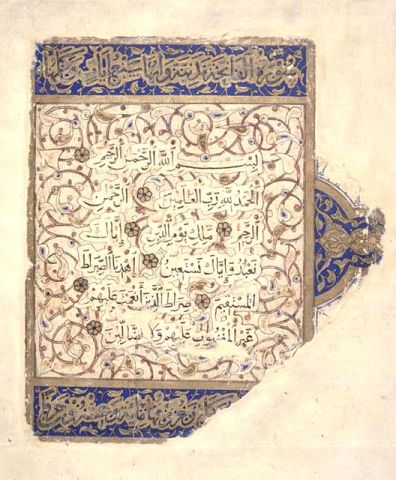Welcome Friends: Ahlan wa sahlan!
I’d like to applaud our Friends who have been learning the important Qur’anic definitions we’re presenting here, at The Iqra Challenge!
My hope is to supply you with a ‘Table of Definitions,’ but in the meantime, keep up the great work, and thank you for telling us what you’ve been doing! Your comments mean a lot to Author AND Readers of this Blog, so do write.
Muhammad Asad’s Translation of our new Chapter.
Their commentaries can only be read in verse by verse view.
سورة إبراهيم
COMMENTS:
Yusuf Ali says in his introduction:
“The subject-matter of this Sura is a continuation of the concluding portion of the last Sura, which explained how God’s revelation gains ground in spite of selfish man’s opposition. Here illustrations are given from the story of Moses and Abraham, and Abraham’s Prayer for Mecca forms the core of the Sura.”
Muhammad Asad says in his introduction:
“ALL AUTHORITIES agree that this surah belongs to the last group of Meccan revelations; in the Itqan it is placed immediately after surah 71 (Nuh), and we have no reason to question this chronology. The title is based on Abraham's prayer in verses 35-41; its relevance to the rest of the surah has been explained in note 48.”
1. The first verse of this Chapter also begins with the ‘sounds’ (written as disjointed letters) which refer to the alphabet (discussed April 6th):
“Alif Lam Ra. A Compilation We have sent down to you, to deliver Cognizant Humans from the Darknesses to the Light by leave of their Lord, to the Path of The All-Mighty, The Worthy of all Praise.”
We notice that, as usual, these sounds inevitably introduce the Compilation! Their value should not be underestimated- perhaps we’ll have time one day to study them specifically. Meanwhile, Readers can refer to ‘Classical Arabic: Unique Human Communication” and check out the table at the end, which gives us the meanings of sounds.
We also notice that Darkness is always plural ظلمات – ‘Darknesses,’ whereas Light is always One. Why is that so? Perhaps because there is One Truth, and many, many Falsehoods; One Correct Direction to follow, and many, many Mis-directions?
2. Actually, Verses 1 2- 3 should be read together, as each leads up to the next with important statements.
In Verse 3 we notice THREE characteristics to Those who Denied Godالذين كفروا- :
· They prefer this immediate, lowly Life to the Hereafter.
· They impede others from following the path to God.
· They seek to distort and bend the path.
How true!
Verse 4 is tied to the first verse. After we read the important preceding statements, we learn how, as Cognizant Humans, each Messenger’s People were given ample chance to deliver themselves from the Darknesses to the Light, seeing that THE MESSAGE WAS DELIVERED IN THEIR OWN TONGUE.
3. After this important introduction, Verse 5 mentions the story of Prophet Moses, peace upon him. His story offers very important lessons, and is a recurrent theme in the Qur’an (if we copy + paste "موسى" in Tanzil we’ll find his name mentioned 129 times.). Here it is mentioned as an example of Guidance from Darknesses to Light
4. In Verse 6 we hear Moses reminding his people of God’s Blessing in delivering them from Pharaoh’s people, and of what they had suffered at their hands.
5. Verse 7 is an oft-quoted verse:
وَإِذْ تَأَذَّنَ رَبُّكُمْ لَئِن شَكَرْتُمْ لأَزِيدَنَّكُمْ وَلَئِن كَفَرْتُمْ إِنَّ عَذَابِي لَشَدِيدٌ
“And your Lord declared: "If you work in Appreciation, I shall indeed augment you, but if you Deny, My chastisement is surely severe."’
We already know (Jan 13th) thatشكر- ‘Shukr’ means accepting what is little and making the most of it until it achieves abundance.
This is a statement of FACT.
When we work, we enhance the value of what we are working with, and it increases further in value. ‘Appreciate’ here is not simply about thankfulness, but is the opposite of ‘depreciate,’ or ‘to lose value’.
Unfortunately, many Muslims of recent generations have taken ‘shukr’ to mean ‘thankfulness by word of mouth,’ as in saying ‘al Hamdulil-Lah.’ This misinterpreted word – on its own- has set us back 1,000 years. Another statement of fact!
6. Verse 8 takes us back to Prophet Moses, who tells his people that God is in NO NEED of anyone’s faith. Here we encounter the word ‘ghaniغني- ’ as one of God’s attributes. Readers might remember that this word in Arabic means Self-Sufficient (but when attributed to us, is misunderstood as ‘wealthy’). See Posting of April 26th.
7. Verses 9- 10 illustrate the familiar arguments between God’s Messengers (NOT ‘apostles’) and those who disbelieve them.
Notice, in Yusuf Ali’s footnotes, his correct translation of ‘nabaنبأ- ’ as ‘news’ and his valuable indication as to the difference between doubt /‘shakشك- ’ and suspicion /‘reybريب- .’
Enough said!
Our next Reading is from HQ 14: 11- 24.
Peace unto all!
.jpg)
1 comment:
Must admit never understood shukr and ghani thanks for helping me understand
Alia
Post a Comment